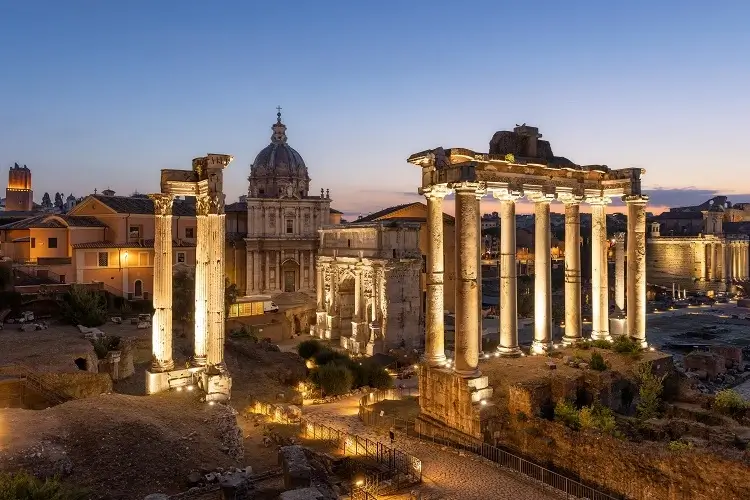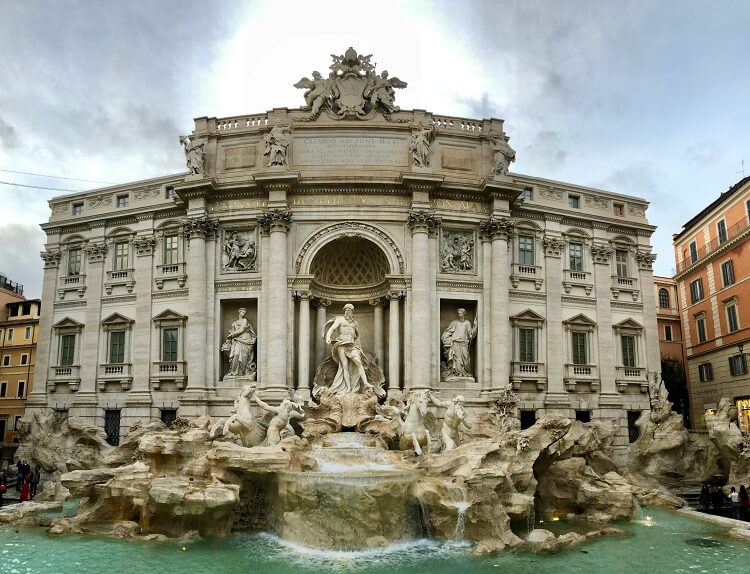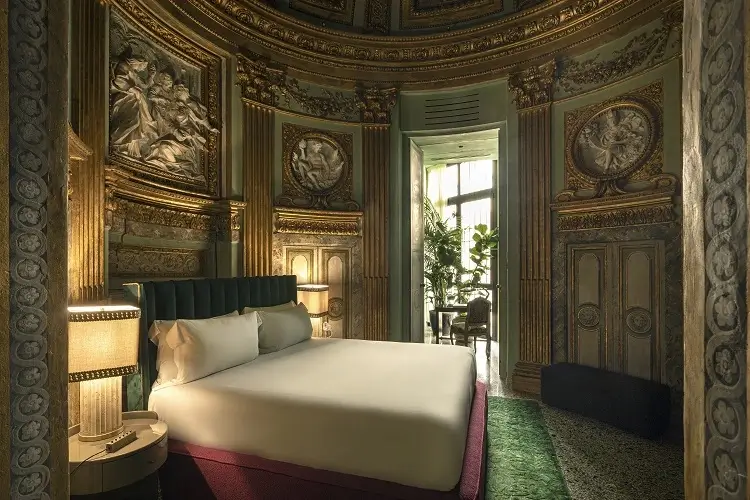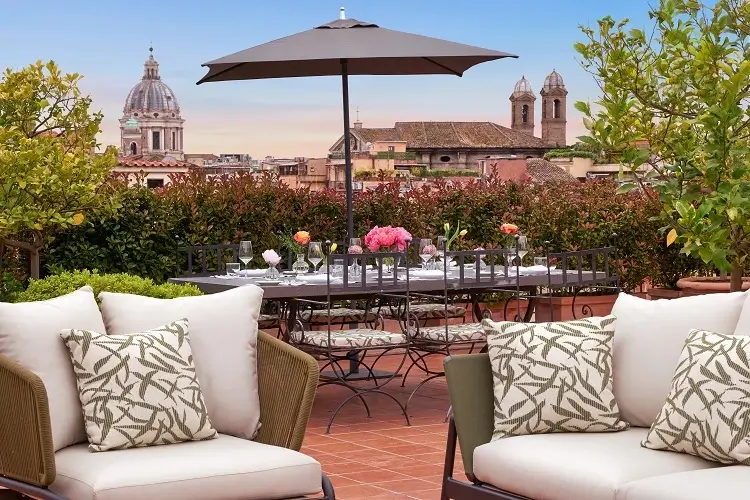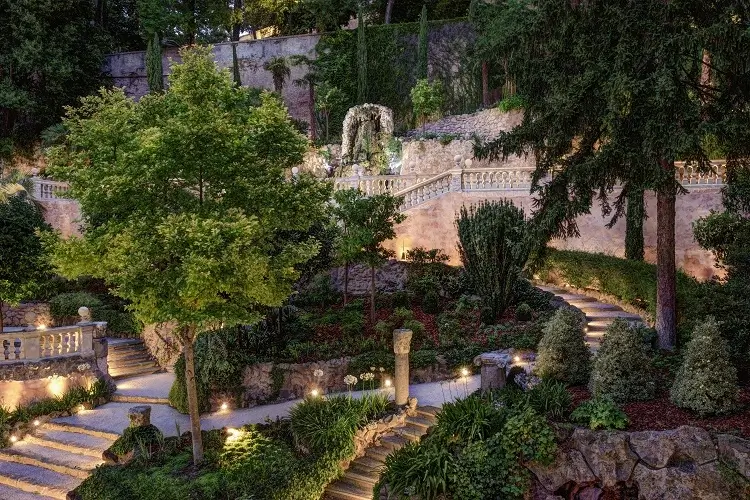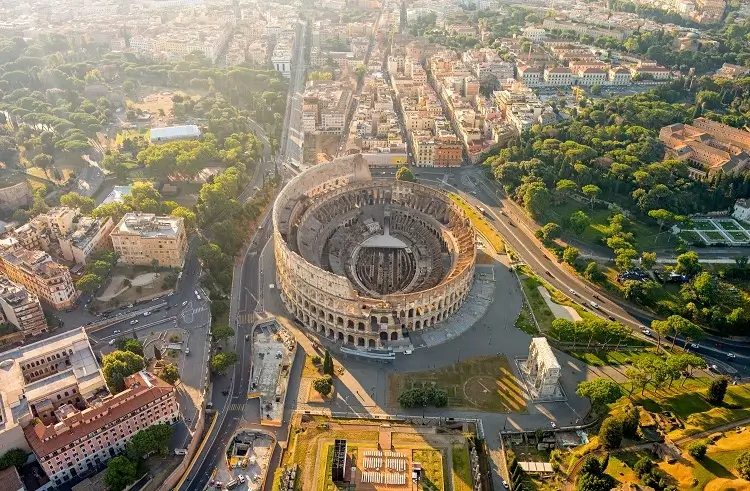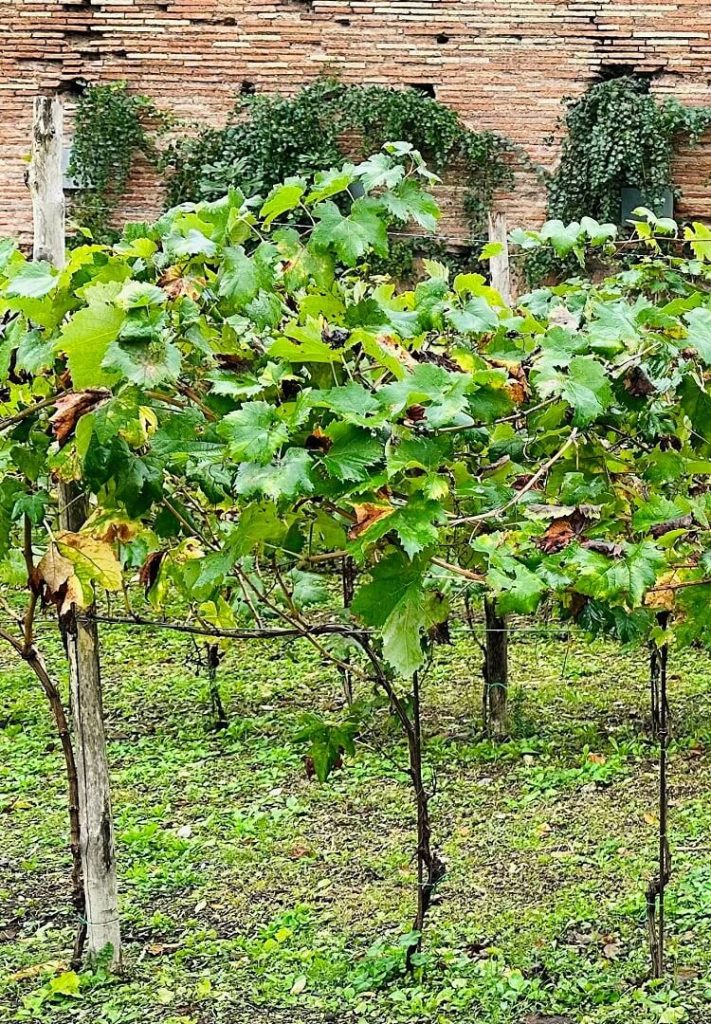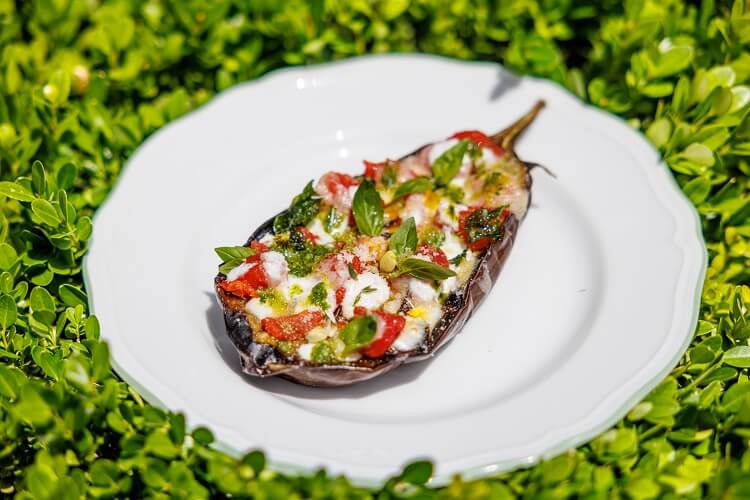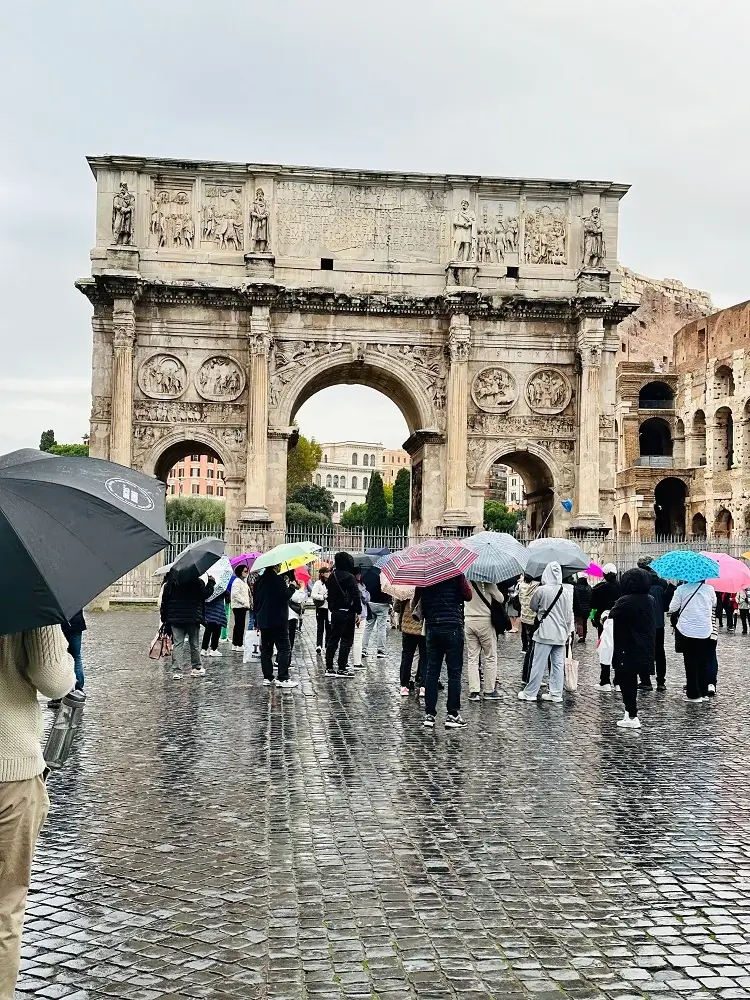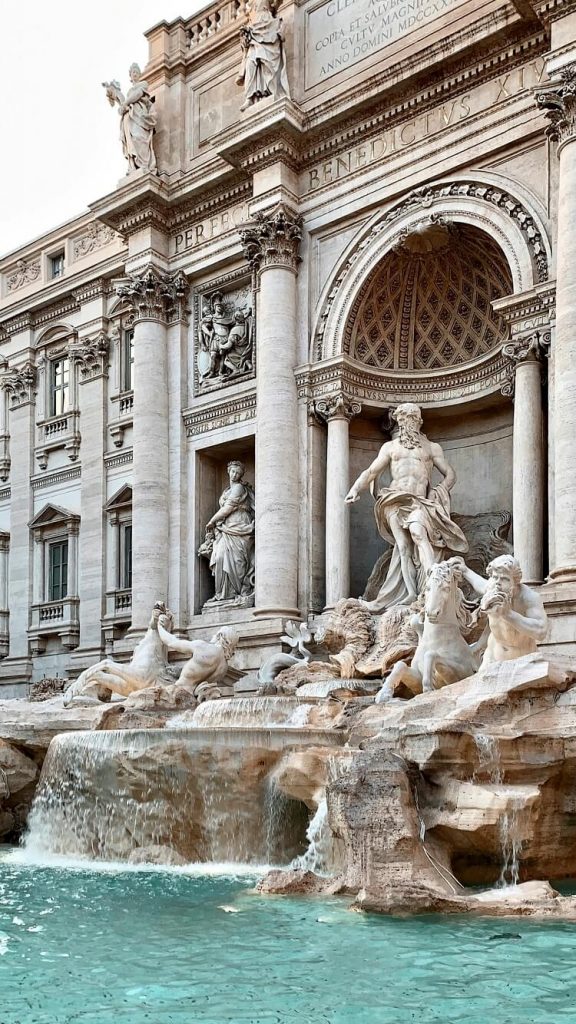Rome is calling in 2025, and it has never been more captivating. The 2025 Holy Year, known as the Jubilee, is a significant event in the Catholic Church. It marks a time of spiritual renewal and celebration and offers a chance to witness the Eternal City in its most splendid and reimagined form.
Pope Francis has named the 2025 Jubilee “Pilgrims of Hope,” but the city uses “Rome is Transforming” for the extensive years-long renovations that have taken place around the city. In a city that was built out over millennia, significant transformations are rare, but spurred by the Jubilee, new pedestrian areas like Piazza Pia, which can hold 150,000 people, replaced one of the most congested traffic areas into a wide pathway from Castel Sant’Angelo to St. Peter’s Basilica. Landmarks like Trevi Fountain, Bernini’s Fountain of the Four Rivers, the Neptune Fountain and Fontana del Moro have been restored in time to welcome approximately 30 million pilgrims to the Eternal City this year.
To give a sense of the type of history we’re dealing with, Pope Boniface VIII initiated the first Holy Year in 1300, and in 1475, Pope Sixtus IV commissioned Michelangelo to create the Sistine Chapel for that year’s Jubilee. Today’s pilgrims will flock to Rome seeking indulgence and forgiveness through the sacred entrances to the city’s four major papal basilicas: St. Peter’s, San Giovanni in Laterano, Santa Maria Maggiore and San Paolo Fuori le Mura.
While Rome’s monumental past looms large, it now exists alongside a modern city that honors its heritage while investing in its future. From ancient ruins to newfound sustainable beauty, here’s how to experience Rome in high style during the 2025 Jubilee year.
Stay in Style
For a sumptuous home base that will have you feeling like a king or queen, Palazzo Shedir is the epitome of opulence. A former home of the Borghese family, the Palazzo is a five-star experience in the city’s heart that perfectly combines modern extravagance with historical significance. Guests are welcomed into a private noble residence with the grandeur of the Vatican (in fact, a Pope once owned it), with extras like a private butler.
Another standout option is Umiltà 36, an avant-garde boutique hotel that plays on classic Roman themes. It’s set just steps away from iconic landmarks like the Trevi Fountain and Via del Corso. The hotel blends contemporary art with elegant architecture, and its restaurant, Aquamarina, is a seafood haven and one of the top restaurants in the city. It offers sweeping panoramic views of Rome’s skyline from the rooftop terrace.
Then there is Hotel De Russie, just off Piazza del Popolo, the people’s square, where Roman soldiers trained during the Empire. Owned by the Rocco Forte Family, this five-star retreat is known for hosting celebrities and dignitaries. Despite its central location, it gives the feeling of seclusion with ornate tiered gardens enclosing a courtyard behind the hotel where lavish brunches, candlelit dinners and an extensive cocktail bar are ensconced.
The Regreening and Refreshing of Rome
As you sip your cappuccino in one of Rome’s many charming piazza cafes, you may notice something unexpected: lush greenery alongside Rome’s stone streets and—if you’re lucky—grapevines. Rome’s relationship with viticulture dates to the Roman Empire, and this symbolic revival celebrates its heritage while promoting sustainability in the modern world.
Roman mythology is full of stories surrounding Bacchus, the god of wine, and the vine’s role in Roman culture. One of the standout features of this re-greening initiative is the vineyard at Vigna Barberini on Palatine Hill, which grows the white grape Bellone, a variety dating back to the Roman Empire.
Today, Bellone is more than just the drink of Caesar—it has become a beloved grape that flourishes across Rome’s vineyards. Palatine Hill—the legendary birthplace of Rome, where emperors once walked—now displays rows of grapevines, creating a serene juxtaposition of past and present. This vineyard, planted as part of Parco Archeologico del Colosseo’s green initiative, symbolizes Rome’s deep-rooted connection with wine.
The greenery throughout the city enhances biodiversity, improves air quality and balances the urban landscape with nature. These plantings are part of a broader €4.3 billion effort to revamp Rome over the next decade, including creating 100 new parks, ensuring that Rome’s future will be as green as its illustrious past.
Wine & Dine: Discover the Flavors of Rome
To truly experience the essence of Rome’s wine past, venture just outside the city to explore wineries offering a wide variety of exquisite wines. From the rolling hills of the Roman countryside to the vineyards of Castelli Romani, local vintners like Jacobini provide exclusive tastings where you can sip the fruits of Roman viticulture.
Travel to the charming hill town of Cori, a location that helped save the Bellone grape from extinction. A cooperative of grape growers continued producing native grapes like Bellone, Cesanese and Nero Buono even when the trend leaned toward international varieties. Today, Cori’s winegrowers, such as Marco Carpineti and Cincinnato, are making excellent Bellone wines, both still and sparkling, and distributing them worldwide.
After a day of vineyard exploration, indulge in a world-class dining experience at La Pergola, Rome’s only three-Michelin-star restaurant. With its panoramic city views, La Pergola offers the perfect setting to savor Italy’s finest culinary offerings, with dishes thoughtfully paired with Bellone wine for a truly indulgent experience. For a more relaxed but equally delightful evening, dine at Ristorante Aroma near the Colosseum. This Michelin-starred gem pairs its exquisite dishes with local wines.
For a truly unique experience, visit Enoteca La Torre, a two-Michelin-star restaurant with over 1,000 different wines, located in the spectacular Hotel Villa Laetitia. Head chef Domenico Stile blends his Campania roots with Italian influences and even a hint of Asian flavors for an unforgettable dining experience.
Cafe Romano stands as one of Rome’s premier dining experiences because it captures the essence of Italian refinement in an atmosphere of effortless sophistication. Set within the historic Hotel d’Inghilterra, the restaurant offers timeless Roman charm and contemporary culinary artistry, with a menu that honors the rich traditions of the region while elevating each dish through exceptional ingredients, thoughtful techniques, and an elegant sense of balance that appeals to discerning travelers and locals alike.
Exclusive Experiences to Celebrate the Jubilee in Style
Shopping in Rome’s Designer Fashion District. No luxurious weekend in Rome would be complete without a shopping spree in the city’s upscale fashion district. Stroll down Via Condotti, where boutiques of Italy’s most famous designers—Gucci, Valentino, Bulgari, and Fendi—line the streets. Book a private session at Fendi’s flagship for the ultimate shopping experience.
Nighttime Vatican Tour. Enjoy the Vatican Museums and Sistine Chapel after hours, with a private guide and no crowds, offered by City Lights Tours.
Helicopter Tours Over Rome’s Iconic Landmarks. Witness Rome’s majestic landmarks from a unique vantage point with private helicopter tours. HeliFly offers bespoke aerial experiences, allowing you to soar over the Colosseum, St. Peter’s Square and Castel Gandolfo.
Caravaggio 2025. This landmark exhibition in Palazzo Barberini celebrates Michelangelo Merisi, known as the renowned artist Caravaggio (1571–1610), as part of the Jubilee celebrations.
Jubilee 2025 offers an unparalleled opportunity to witness the city’s blend of ancient grandeur and modern transformation. Rome is embracing the future while staying deeply connected to its storied past. Whether savoring a glass of Bellone, staying in opulent palaces or shopping for designer treasures, your time in Rome will be a magnificent and meaningful journey through history and evolution, making this Jubilee year unforgettable.


